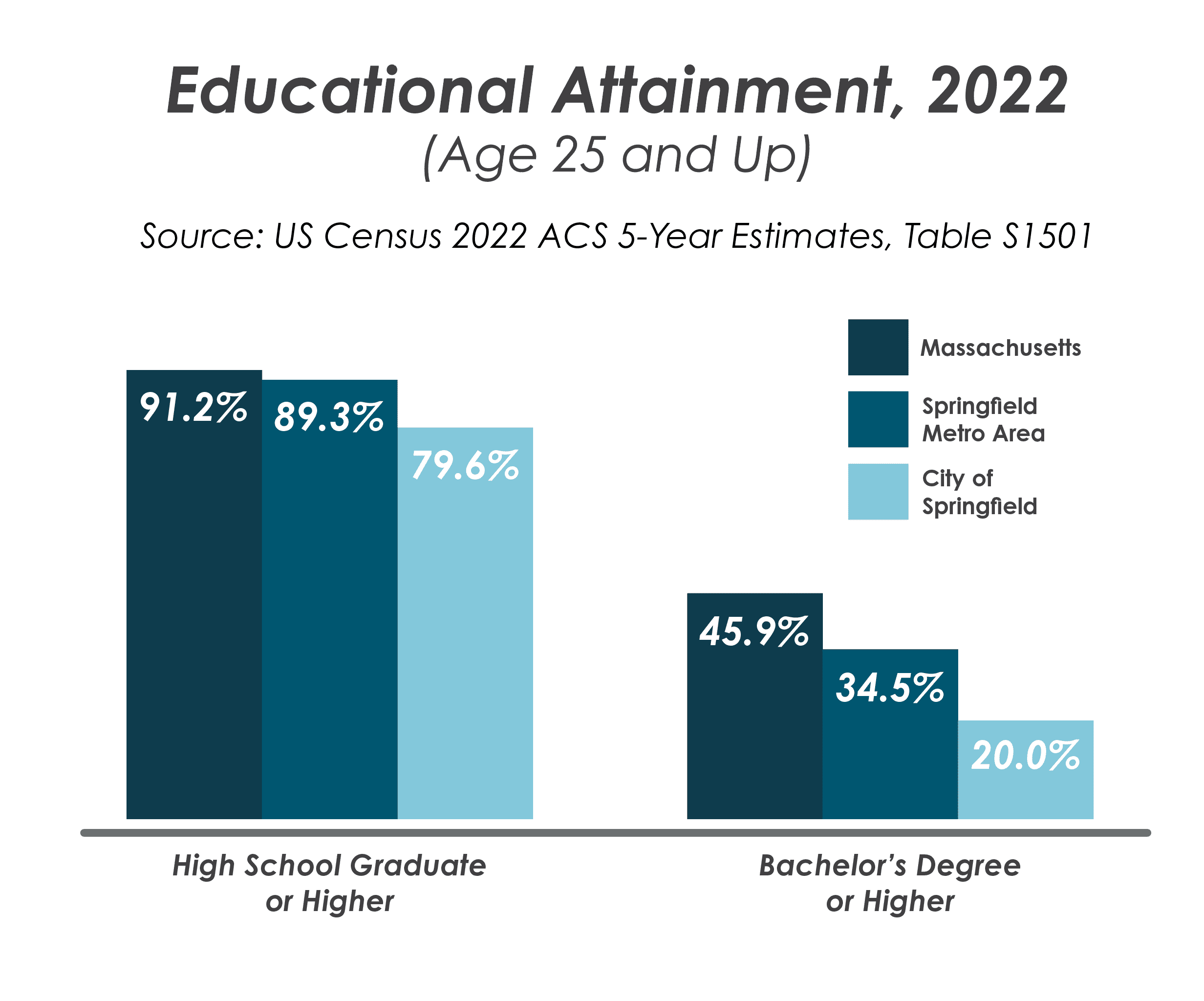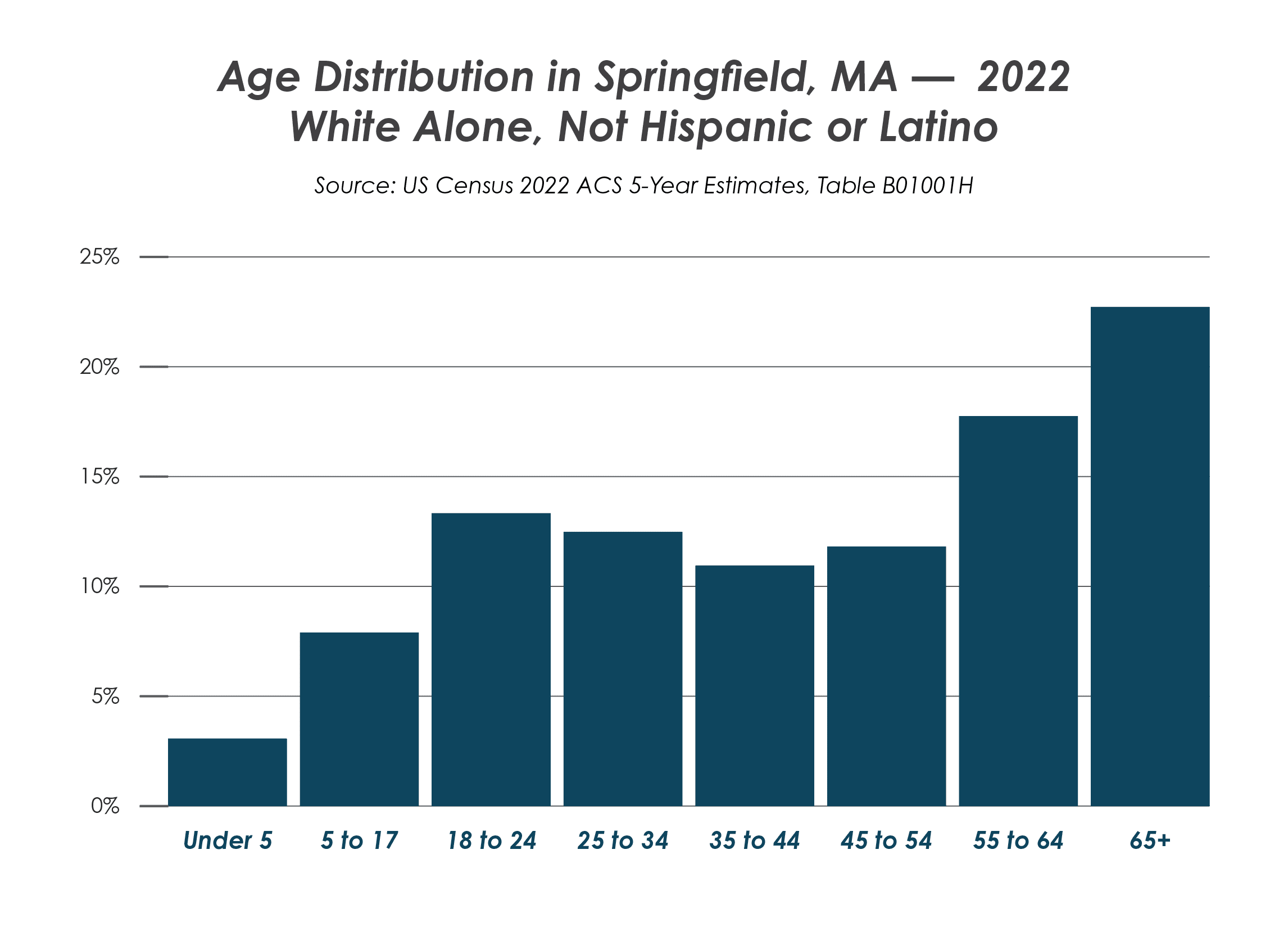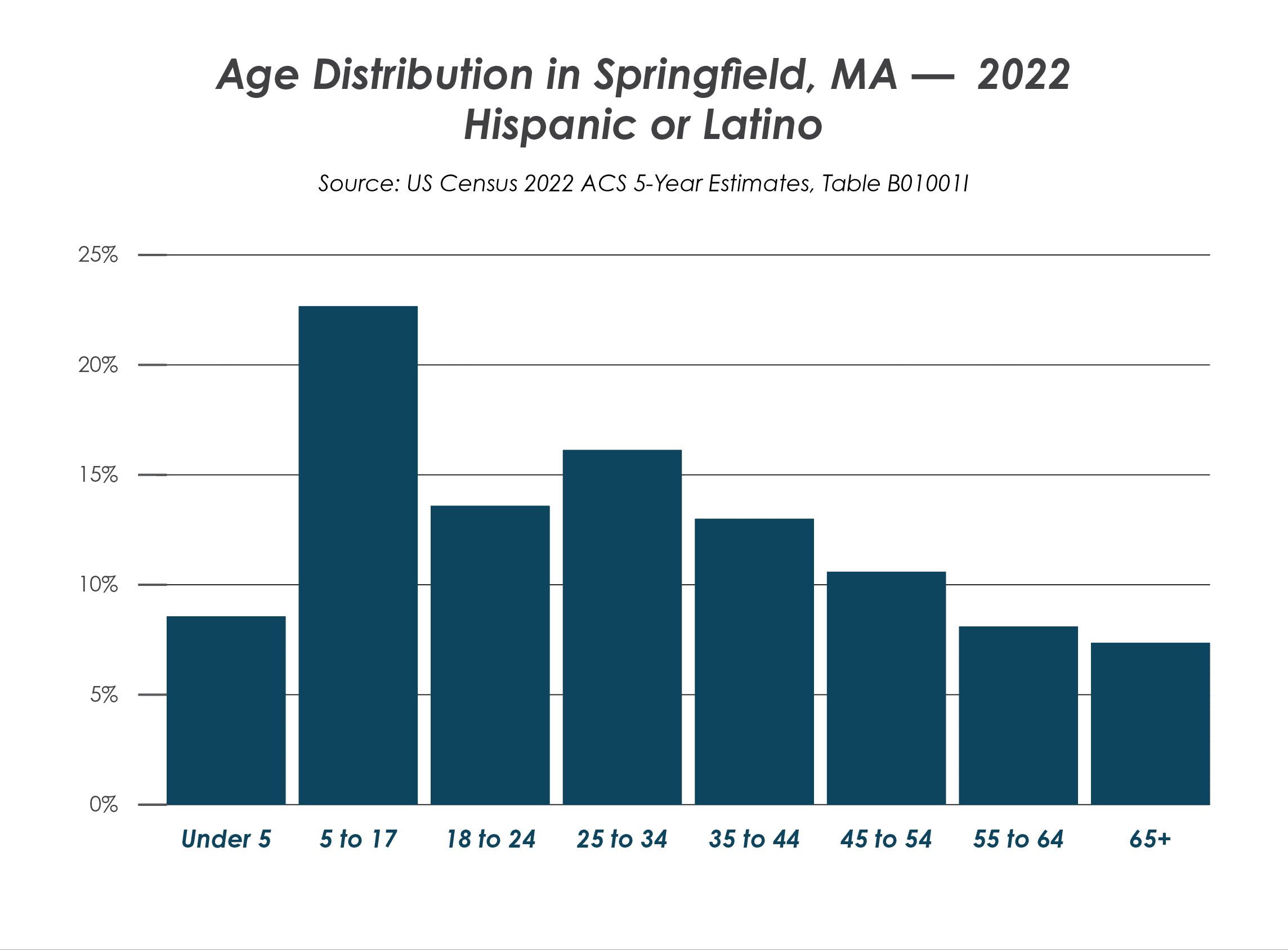Our Mission is to remove systemic and racial barriers to economic mobility and well-being.
We're developing multifaceted strategies to ensure equitable economic growth—combining
innovative strategies - systems change - and partnership building
to increase access to economic opportunity for marginalized members of the community. We bring together over 40 organizations to develop new frameworks, strategies, and practices that meaningfully improve our workforce ecosystem, anchored around the belief in equitable access to economic opportunity, resilience, and growth.
Our Challenge: A Changing Landscape
The economic landscape has changed a great deal over the last 20 years, and Springfield WORKS is helping employers, residents, and support systems navigate this new economic landscape. New pathways to economic mobility are required, as well as updates to existing pathways.
The Visible Problems
A lack of common measures and tools make it difficult to drive continuous improvement and best practices.
Residents struggle to identify supports when they are not well coordinated and do not align with family realities or job needs.
Often Training Programs are disconnected from job opportunities, and employers may not know how to invest in worker wellbeing.
Labor force participation in Springfield is trending downward. The city's labor force participation rate is significantly lower than Massachusetts and the Springfield Metropolitan Area (MSA).
Wages do not match up with the cost of basic necessities.
The difference between the minimum wage, average wage, and living wage for a family in Springfield is significant. Even someone working two full-time minimum wage jobs would not make enough to make ends meet.
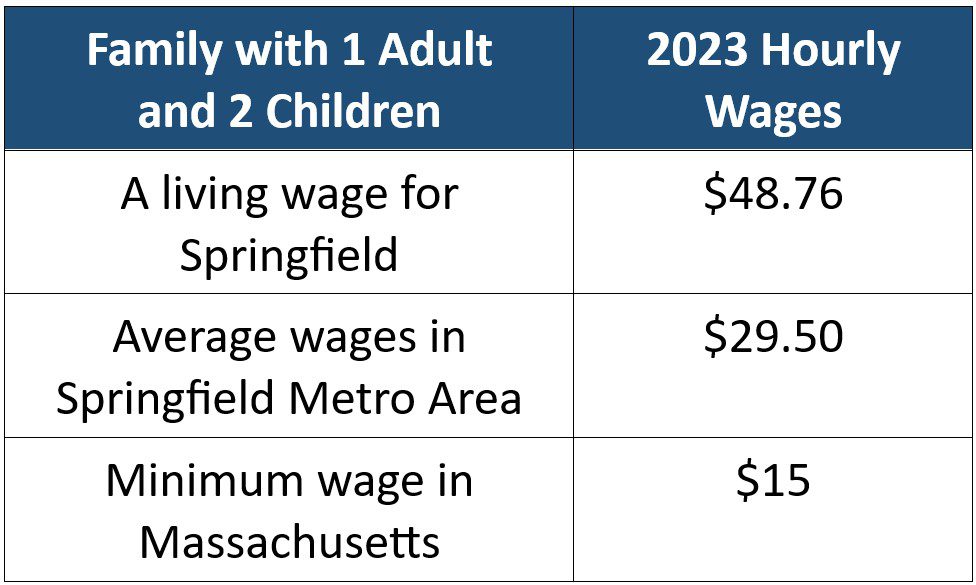
Sources (2023):
- Living wage: MIT Living Wage Calculator
- Average wage: Bureau of Labor Statistics
And wages have decreased in recent decades:
The average hourly wage in 1998 was $17/hour. Given inflation, that would equal about $32/hour today, using the BLS Inflation Calculator.
That means wages have declined in the past 20 years, while the cost of goods and services have increased, making it harder for working families to make ends meet.
Springfield, and communities of color, have unique challenges as a result of strategic disinvestment.
These statistics have real, human consequences.
Poor Population Health
Hampden is the lowest rated county in Massachusetts for population health, and reflects worse health markers than both Massachusetts and the U.S. overall:
- A higher percentage of people in poor or fair health
- Higher unemployment
- More children in single-parent households
- More children in poverty
Source (2023):
Percentage of Rent-Burdened Households
Rent Burden is when a household spends more than 30% of their income on housing, often preventing them from affording other necessities like food, healthcare, and education. Even middle income renters are burdened, demonstrating the difficulty of affording basic necessities today.
Source (2023):
- Rent burden sources: Natl Low Income Housing Coalition
Despite these challenges, we see opportunities to lift up our communities.
Major demographic changes present an incredible path forward, and data on single parents, childhood poverty, and low wages for communities of color show us where we need to direct our efforts. We need accessible, supportive career pathways for parents and families with family-sustaining wages and benefits.
This requires collaboration and commitment from a wide variety of stakeholders, and we are dedicated to facilitating those efforts. Together we can bring new models to employers and service providers and revolutionize career pathways to meet the needs of our communities.
Our region will be in a better position for long-term economic resilience if we
build on our young workforce,
and potentially guard against any negative impact of the “silver tsunami," the retiring older white population.
Our Solution is Collaboration
Springfield WORKS is bringing people together to address pressing problems in workforce and community development.
Before Springfield WORKS, we identified 43 organizations working separately on workforce development—we brought many of them together to develop new frameworks, strategies, and practices that meaningfully improve our workforce ecosystem as a whole. Together we target the right resources to address inequities resulting from historic patterns of divestment and bias on the lines of geography, race and ethnicity, gender, and socioeconomic status. We believe that addressing the root causes of these problems requires collective impact through coordinated action. That's exactly what we aim to do through our innovative collaborations.
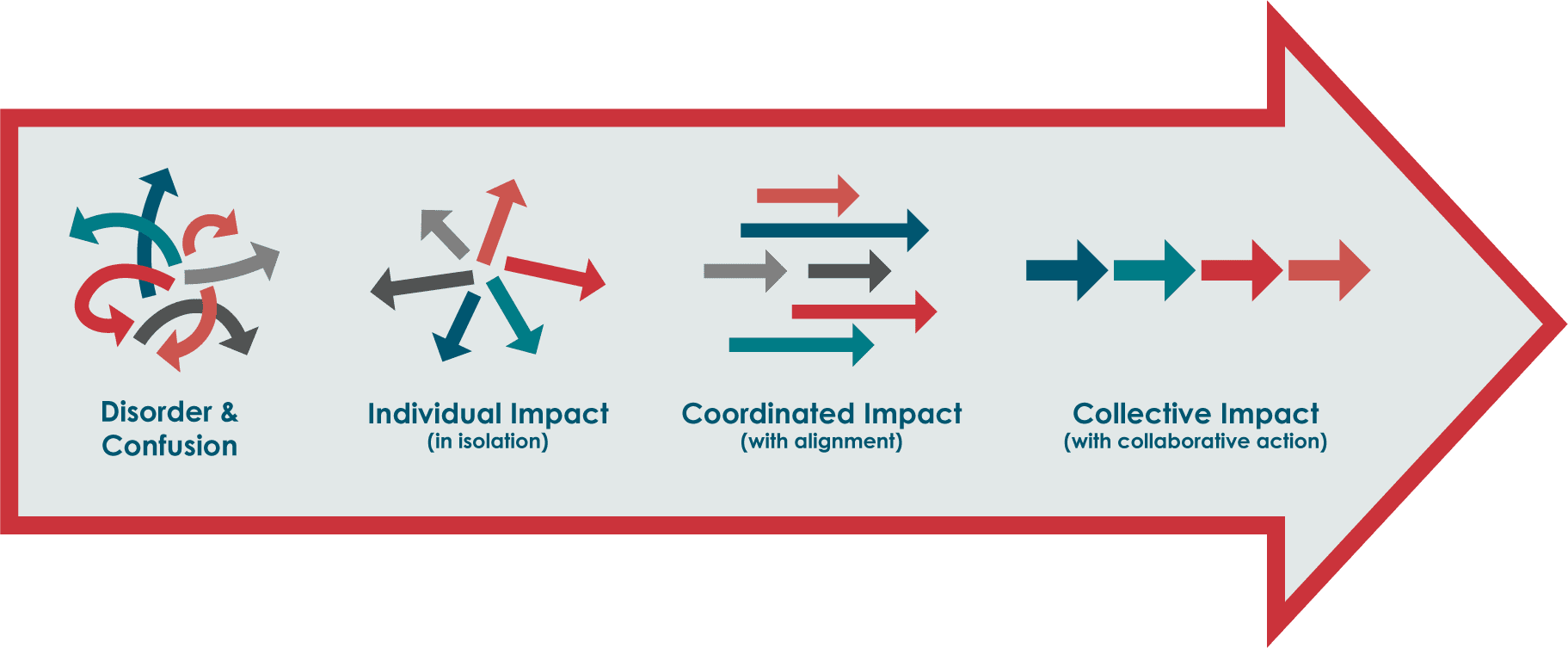
Our Strategies
We work to remove the obstacles that prevent employers from finding the workers they need, and job seekers from finding their way to secure employment with wages that pay. Our strategies encompass three categories: Community Empowerment, Economic Mobility, and Policy Improvements.
Our Key Measures of Success
We measure our success through three critical pillars, Direct Impact, Capacity Building, and Systems Change. This framework both identifies the most effective strategies for making our regional economy function better for workers, families, and employers, and captures the multifaceted approaches needed to achieve our vision.



